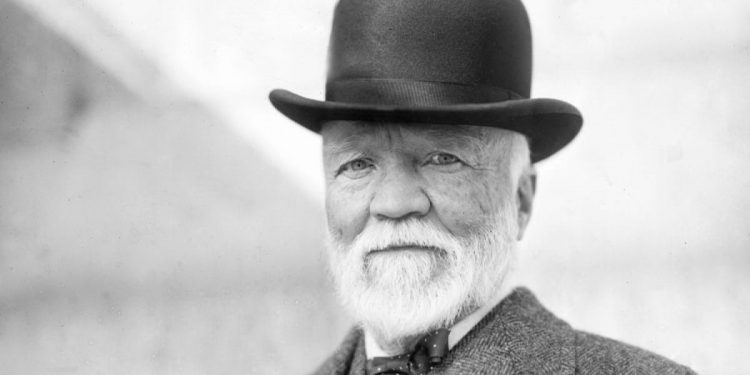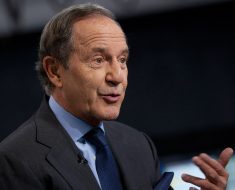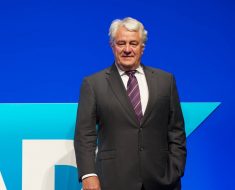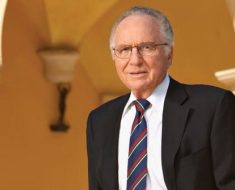
Andrew Carnegie’s net worth is $310 Billion. Also know about Andrew Carnegie’s bio, salary, height, age weight, relationship, and more …
Andrew Carnegie Wiki Biography
- Andrew Carnegie was born on November 25, 1835, in Dunfermline, Scotland, and is regarded as one of the industrial revolution’s giants in the United States, having established a virtual empire in iron and steel before retiring in 1901 and focusing on philanthropic endeavors.
- Andrew’s net worth, according to Forbes magazine, would have been $310 billion at its peak, accumulated during his career in the iron and steel industry during the second half of the nineteenth century, culminating in his sale of his Carnegie Steel Company to J.P. Morgan for $480 million ($13.6 billion in 2015) in 1901, putting him in fourth place among the world’s richest people.
- Andrew Carnegie was born into a family of weavers who immigrated to the United States in 1848 to escape increasingly difficult economic times in Scotland, caused by the replacement of manual labor by machinery.
- Carnegie had also wisely invested $40,000 in Story Farm on Oil Creek in Pennsylvania in 1864, which yielded over $1 million in cash dividends in the first year, with petroleum being especially profitable.
- Carnegie’s net worth was rapidly increasing.
- In 1870, he adopted the Bessemer method for grinding the iron into steel, which was invented by the British engineer of the same name, and spent as much money as he could borrow to construct a suitable factory in Pittsburgh.
- Carnegie maintained close contact with Thomas A. Scott and J. Edgar Thomson (subsequent president of the Pennsylvania railroad) in the postwar years, to the advantage of all three, as significant quantities of steel were needed to satiate the railroad system’s continued growth, and Scott and Thomson were rewarded with shares in Carnegie’s companies.
- Furthermore, Carnegie became interested in the construction of steel bridges, including one over the Mississippi River in 1874, which created a massive new demand for steel goods and led to Andrew Carnegie’s growing wealth.
- Carnegie purchased his largest rival, Homestead Steel Works, in 1883, which included mines, factories, and a 685-kilometer railway, as well as steamships.
- Carnegie’s success in the iron and steel industry was due in part to his emphasis on vertical integration, from iron ore mines to steel-based constructions, similar to Rockefeller’s integration of the oil industry at the same time.
- Andrew Carnegie focused on his philanthropic interests after the sale of his steel company to J.P. Morgan in 1901.
- He had always respected education and gave generously to public libraries in the United States, the United Kingdom, and Canada, as well as several other English-speaking countries, totaling over 3,000, the first of which was established in his hometown of Dunfermline.
- While Carnegie was a ruthless businessman and employer, he founded a pension fund for former workers and one for college professors, among many other notable bequests.
- He designed the famous Carnegie Hall in New York City, but lest that be mistaken for a memorial to himself, he also donated 7,000 organs to churches throughout the United States.
- He established the Carnegie Hero Fund in the United States, the United Kingdom, Canada, Switzerland, and many other countries to recognize and reward heroic deeds.
- He donated $1.5 million to The Hague’s Peace Palace and $150,000 to the Pan-America Palace in Washington, DC, which houses the International Bureau of American Republics.
- In his personal life, Andrew Carnegie married Louisa Whitfield in 1887 and they had only one child before his death on August 11, 1919.
- Carnegie declined to marry while his mother was still alive, focusing instead on caring for her while her health deteriorated until her death in 1886.
- His residual estate of about $30 million was allocated to various charitable organizations after his death.
Andrew Carnegie Quick Info
| Full Name | Andrew Carnegie |
| Net Worth | $310 Billion |
| Date Of Birth | November 25, 1835, Dunfermline, Scotland, United Kingdom |
| Died | August 11, 1919, Lenox, Massachusetts, United States |
| Height | 1.6 m |
| Profession | Business magnate, industrialist, philanthropist |
| Nationality | Scottish, American |
| Spouse | Louise Whitfield Carnegie (m. 1887–1919) |
| Children | Margaret Carnegie Miller |
| Parents | William Carnegie, Margaret Morrison Carnegie |
| Siblings | Thomas M. Carnegie |
| IMDB | http://www.imdb.com/name/nm0138644 |
| Nominations | Founder of : The Carnegie Corporation of New York (CCNY); The Carnegie Endowment for International Peace (CEIP); the Carnegie Foundation for the Advancement of Teaching (CFAT);The Carnegie Council on Ethics and International Affairs (CCEIA) |
Andrew Carnegie Quotes
- There is not such a cradle of democracy upon the earth as the Free Public Library, this republic of letters, where neither rank nor office nor weight receives the slightest consideration.
- Don’t put all your eggs in one basket’ is all wrong. I tell you, ‘Put put all your eggs in one basket, and then watch that basket.
Andrew Carnegie Filmography
| Title | Year | Status | Character | Role |
|---|---|---|---|---|
| Andrew Carnegie | 1914 | Documentary short | Himself | Self |
| Our Mutual Girl, No. 5 | 1914 | Short | Himself | Self |
| Our Mutual Girl | 1914 | Himself (episode 5) (as Andrew J. Carnegie) | Self | |
| Pathé’s Weekly, No. 48 | 1911 | Short | Himself | Self |
| Andrew Carnegie: Rags to Riches, Power to Peace | 2015 | Documentary | Himself | Archive Footage |
| Journey to Palomar, America’s First Journey Into Space | 2008 | Documentary | Himself | Archive Footage |
| Endgame: Blueprint for Global Enslavement | 2007 | Video documentary | Himself | Archive Footage |
| Modern Marvels | 1998-2002 | TV Series documentary | Himself | Archive Footage |
| The Richest Man in the World: Andrew Carnegie | 1997 | TV Movie documentary | Himself | Archive Footage |
| Nova | 1981 | TV Series documentary | Himself | Archive Footage |
| Project XX | 1957 | TV Series documentary | Himself – Businessman | Archive Footage |





